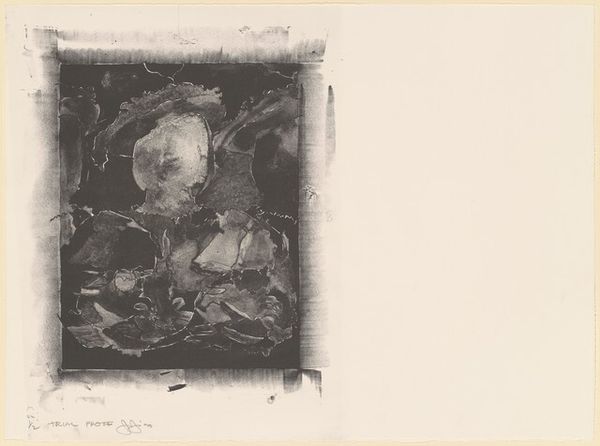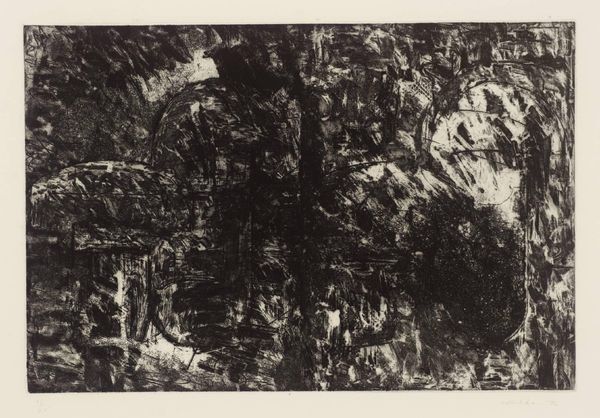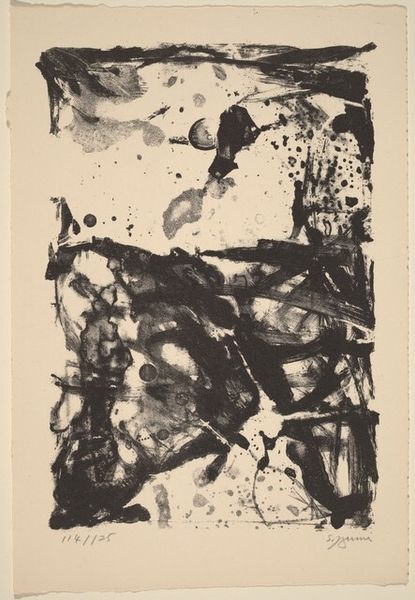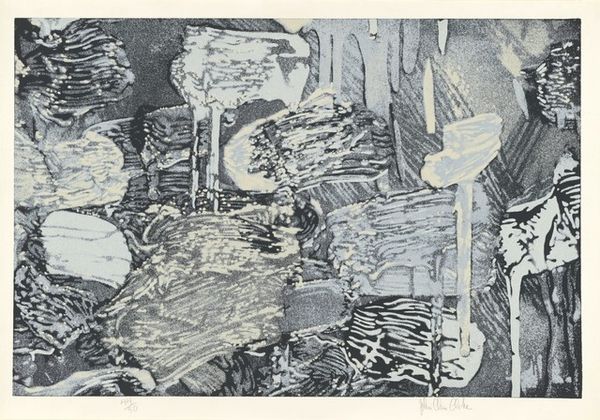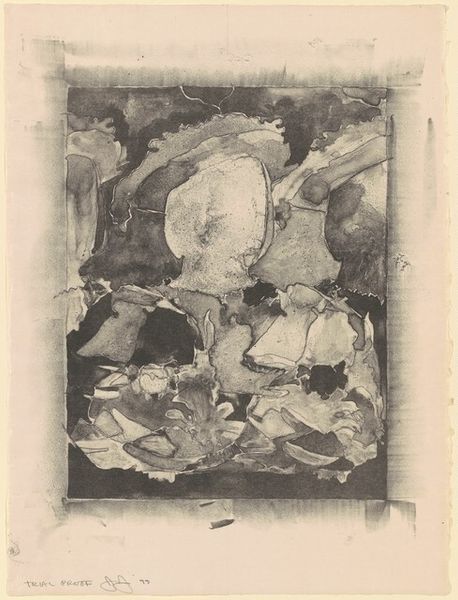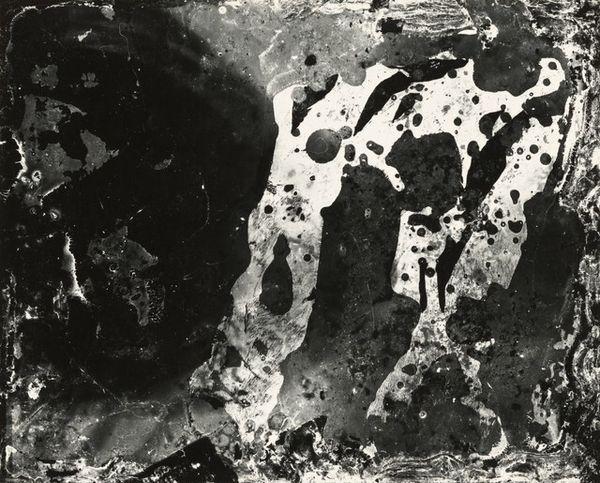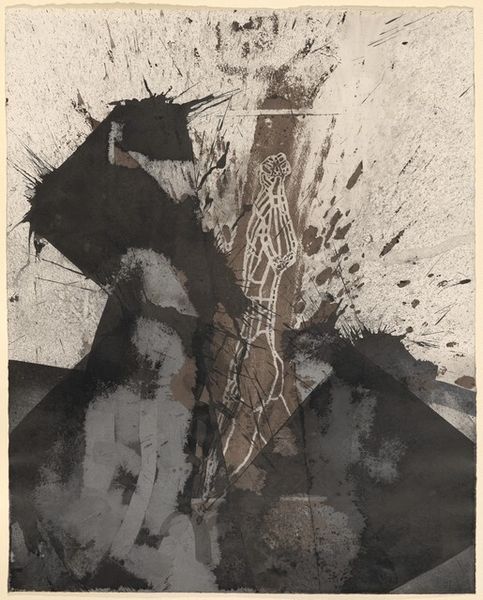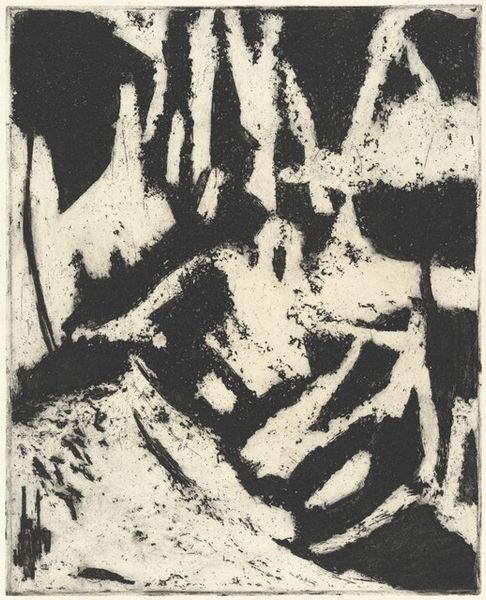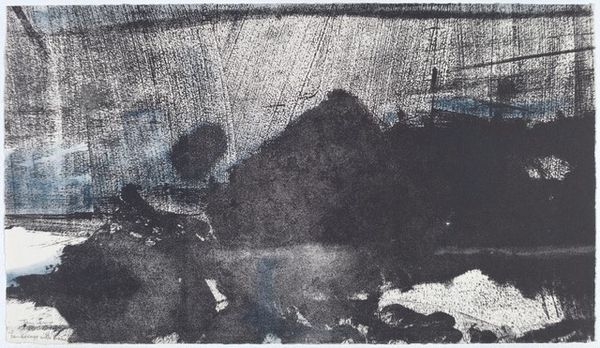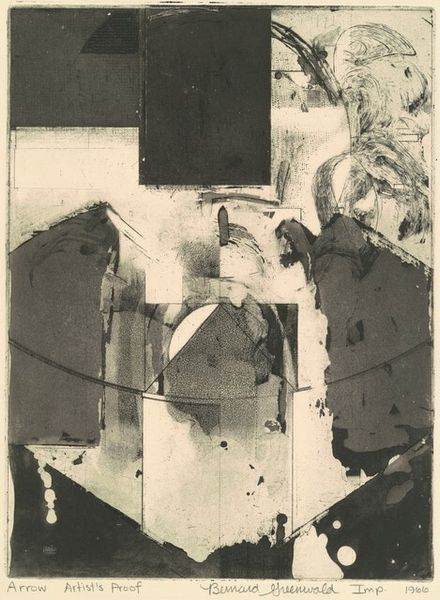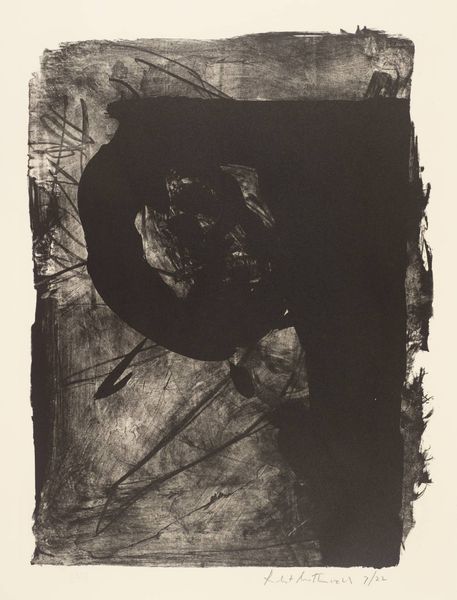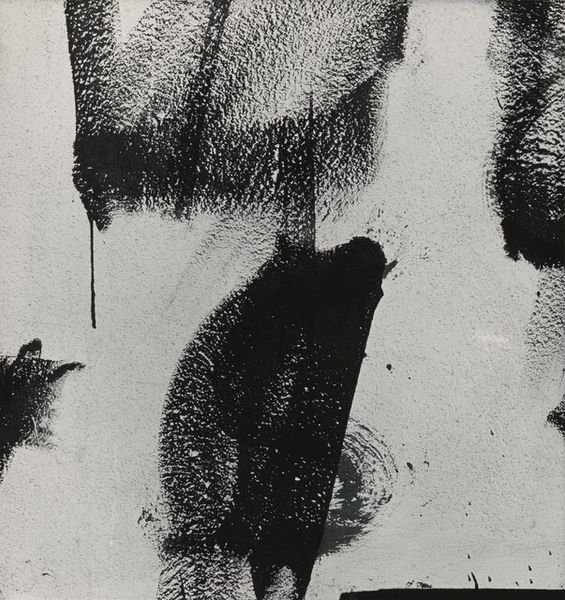
#
pencil drawn
#
amateur sketch
# print
#
pencil sketch
#
old engraving style
#
charcoal drawing
#
pencil drawing
#
hand drawn
#
pen-ink sketch
#
limited contrast and shading
#
natural form
Copyright: National Gallery of Art: CC0 1.0
Curator: This untitled print by Matsumi Kanemitsu, created in 1961, presents a fascinating intersection of abstract form and tangible process. What strikes you most about it initially? Editor: Its raw intensity, definitely. The dense blacks contrasted with the textured grays create an immediate sense of drama. You can almost feel the physical act of the artist working the materials. I am very curious about how Kanemitsu's choice of process affected its creation. Curator: Indeed. Kanemitsu's biography offers a powerful perspective. He moved to the US post-war, becoming deeply involved in the Beat Generation and Abstract Expressionism. Considering this context, I view the high contrast as an expression of that era’s rebellion against social conventions, as well as a nod to political struggle. What do you make of that connection? Editor: I understand what you’re getting at, but for me it's more about the physical processes inherent in printmaking – the layering of ink, the pressure applied, the trace left behind. Those bold shapes… Are they accidental? Or deliberately placed? Regardless, this evokes for me an intimate relationship between the artist, materials, and production. It gives tangible form to the artist's efforts. Curator: Perhaps both interpretations hold value. His involvement with printmaking could also signify a conscious engagement with art's democratization and distribution. Considering print's accessibility versus painting’s relative exclusivity allows it to speak more effectively to working-class communities. I do agree though, those dense blocks have incredible texture. Editor: Yes, and texture signifies history for me. The artwork shows the marks and labor that resulted in it. So by thinking about this piece in terms of its method, labor, and context, maybe we can begin to understand how Kanemitsu blurred boundaries between different materials and practices? It challenges the art world’s rigid categorization. Curator: It makes sense, because, as we think about Kanemitsu's print and its intersection with the materials he used, and how the broader movement of Abstract Expressionism democratized creative expression, we get a deep look into the era’s culture and art production itself. Thank you for speaking to this with me! Editor: Thanks, what an interesting insight into material reality!
Comments
No comments
Be the first to comment and join the conversation on the ultimate creative platform.
